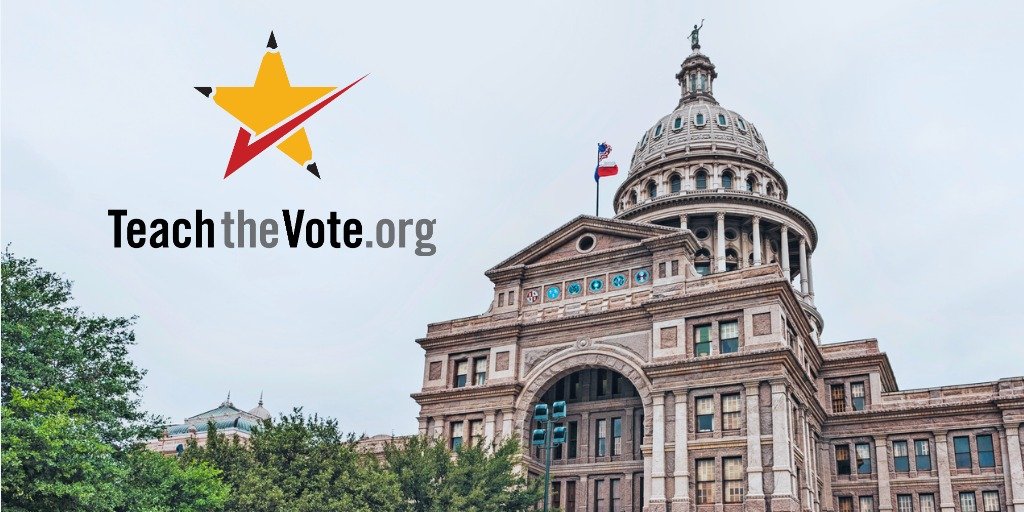House Public Education Committee holds first interim hearing of 2022

School Finance Educator Preparation | Certification Texas Legislature COVID-19 Curriculum | Instruction TEA | Commissioner | SBOE Educator Compensation | Benefits Testing | Accountability
Date Posted: 4/26/2022 | Author: Monty Exter
The House Public Education Committee met for its first interim hearing Tuesday, April 26. The committee discussed two of its 11 interim charges and received an update from Texas Education Commissioner Mike Morath.
The commissioner's presentation began with some general statistics about the size and complexity of the Texas public education system. In a slide somewhat at odds with concerns over a brewing teacher crisis, the commissioner indicated that the number of teachers employed in Texas is higher than any point in history. In terms of students per teacher, Texas has gone from just under 16 students per teacher to just under 15 students per teacher. Note: class sizes are typically higher than student-teacher ratios. The average class size is over 20 and is considerably higher if you exclude smaller specialized settings. Though the total historic employment numbers presented tell us little about teacher turnover or impending declines, they do indicate that advocacy efforts of ATPE and other organizations to maintain funding levels during the COVID-19 pandemic have helped avoid the massive drop in teachers we saw after the budget cuts related to the 2008 financial crisis.
Similar to the slide indicating growth in the total number of teachers over time, the commissioner shared a slide showing that total annual funding for public education rose from approximately $52 billion in 2013 to $69 billion in 2020, an apparent increase of $17 billion. However, the numbers presented were not adjusted for inflation or student population growth. When adjusting for both, the increase falls from $17 billion to approximately $7 billion, about an 11 percent increase over 2011 funding levels. The vast majority of that increase came from growth in local property tax collections.
 After briefly discussing pre-pandemic college readiness and student achievement, Morath spent a significant amount of time discussing the impacts of COVID-19. He touched on enrollment declines, growth in the identified special education population, and most particularly, declines in student achievement. He then turned to promoting Texas Education Agency (TEA) initiatives around accelerated instruction, such as rigorous instructional materials, teacher supports, and more instructional time for students.
After briefly discussing pre-pandemic college readiness and student achievement, Morath spent a significant amount of time discussing the impacts of COVID-19. He touched on enrollment declines, growth in the identified special education population, and most particularly, declines in student achievement. He then turned to promoting Texas Education Agency (TEA) initiatives around accelerated instruction, such as rigorous instructional materials, teacher supports, and more instructional time for students.
Morath said the agency’s initiatives around teacher supports include programs such as the Texas Reading Academies, pending plans to replace the PPR certification exam with edTPA, and addressing teacher pay through the Teacher Incentive Allotment (TIA). Initiatives aimed at increasing instructional time include tutoring required by last year’s House Bill (HB) 4545 and funding for extending the school year.
The commissioner’s appearance gave members of the House Public Education Committee – some of whom participated in the meeting virtually – an opportunity to ask questions of Morath on a variety of topics, including demands on teachers’ time that are contributing to the burnout reported by many in the field. Rep. Brad Buckley (R-Killeen) commented on burdensome paperwork and reporting requirements, while Reps. Gary VanDeaver (R-New Boston) and Alma Allen (D-Houston) both brought up teachers’ frustrations with the time-consuming Reading Academies.
Following the commissioner’s remarks, the committee heard invited testimony on two of the interim charges it has been asked to study this year:
- Interim Charge Number 2: “Examine the impact, including any financial impact, to the Texas public school system of an increase in the number of children crossing the Texas-Mexico border. Review the history, any applicable precedents, and the legal landscape regarding the education of migrant children in Texas’s public schools.” View TEA's presentation on the interim charge here.
- Interim Charge Number 11: “Review the impact of investments of the Permanent School Fund by the State Board of Education in businesses and funds owned or controlled by the Russian government or Russian nationals, and determine the need for investment restrictions. Consider the impact of any proposed investment restrictions on fund performance.” View TEA's presentation on the interim charge here.
The committee’s next interim hearing will cover interim charges on monitoring key legislation from the 87th Legislative Session in 2021, as well as studying the effects of COVID-19 on K-12 learning loss and best practices that exist to address learning loss, examining the impact of COVID-19 on students' mental health, and examining the causes and contributors for chronic absenteeism in public schools and its impact on student outcomes. A date for that hearing has not yet been announced.
CONVERSATION
RECOMMENDED FOR YOU

Congress | Federal, COVID-19, Curriculum | Instruction, Educator Compensation | Benefits, Educator Preparation | Certification, Elections, School Finance, School Safety, Testing | Accountability, Texas Legislature
08/04/2023
Teach the Vote’s Week in Review: Aug. 4, 2023
ATPE weighs in on current political climate for education in Houston Chronicle story—plus, a look at federal ed prep and special education developments.

12/19/2025
Teach the Vote’s Week in Review: Dec. 19, 2025
Happy Holidays from ATPE! The ACLU of Texas is challenging SB 12 in federal court, and ATPE has distributed candidate surveys to those running for statewide, legislative, and SBOE seats.

12/18/2025
Gov. Abbott’s property tax promise and the split in the Texas GOP
Property taxes aren’t just a political talking point. They’re the main revenue source for vital local services, including police, fire, and public education.


Thank you! Much appreciated!